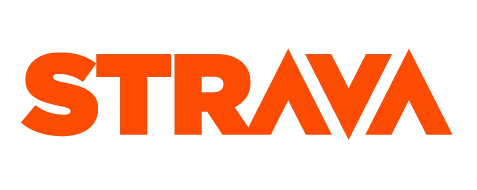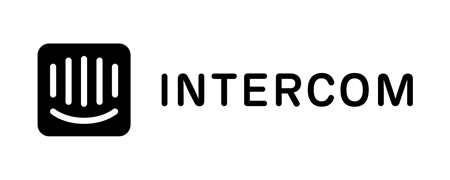On my business coaching call this morning one of the other business owners in the group asked a question. I’ll call him Steve.
The question was about how to get his customers to start using the app they’ve just paid for. They pay in advance for usage.
Steve gave an example of one customer after signing up and paying they were really excited to start on Monday, but Monday came and nothing happened. Apparently they were too busy that week so they’ll now start next Monday. Next Monday came and went but still nothing happened.
Steve was putting in the work, jumping on calls with his customer, walking them through the app and the process. They’d already paid so Steve new they wanted the app so why weren’t they getting started?
There could be lots of reasons why this happened. The app might be too hard to use, the customer might actually have been too busy. But one of the big reasons this can happen to any business is that Steve might be attracting the wrong customers.
One of the business coaches on the call brought this to our attention.
“Take, Take, Take, Quit” he announced!
That’s how you can tell you might be attracting the wrong customers. They take, take, take, and then they quit.
You’ve probably had this happen with your coaching business.
A new client seems really excited, they signup, pay and you have a kick off call with them. All seems to be going well. They are full of questions and want your advice on this training principle and that new tech device, and the latest nutrition strategy. All seems well until training is due to start. For some reason they don’t start the training, or they do start but do something different to what you prescribed in their training plan. You get on a call to see what’s up, then the excuses come so you do your best to bring them around. This repeats for a few weeks, then they quit.
“Take, Take, Take, Quit”
You might be attracting the wrong customers for your business.
In the moment it’s no ones fault. The client coach relationship needs to be matched. Not all clients can be coached by all coaches. Your business will be much stronger if you intentionally attract the right type of customer for your business and avoid the wrong type of customer.
I wrote a tongue and cheek blog about “The Collector”, “The Victim”, “The Cheapskate”, and the “Special Problems” types of clients years ago, worth a read but I didn’t cover how to avoid attracting the wrong type of customer.
Here’s 4 reasons why you could be attracting the wrong customers and some ways to avoid them.
Mismatched Expectations
One common reason for attracting the wrong customers is a misalignment of expectations and values. When your marketing and messaging aren't clear about what your coaching services offer and what your training principles are, athletes may sign up with unrealistic expectations or needs that you can't fulfill. For example, a running coach who specializes in training for marathons might inadvertently attract clients solely looking to improve their 5k time if their messaging isn't clear. That may seem like a too obvious mistake to make but it’s hard to see the forest for the trees in your own business. What seems obvious to you, will likely not be to those new to your business.
As a coach it’s important your communication is transparent, you need to set boundaries, and ensure that your marketing materials accurately represent your services, target audience, and values. If you have all that in place you’ll be less likely to experience this mismatch.
Ineffective Qualifying Process
Another reason for attracting the wrong customers is not having a proper qualifying process in place. A well-designed qualification process helps filter out potential athletes who may not be a good fit for your coaching services. For example, a triathlon coach may want to ensure their clients have a basic level of swimming proficiency before committing to a coaching program that requires from the beginning. Again, you might think that’s obvious but a beginner triathlete may not.
As a coach you should be walking your potential clients through an intake process, including asking the right questions, using screening tools, and setting realistic expectations during initial conversations. By doing so, you'll be more likely to attract customers who are genuinely interested in your services and willing to commit to the process and meet the minimum requirements. A good practical starting point for at least your one one one coaching services is create an “Application Form” to make sure new clients meet the criteria before coming on board.
Our coaching platform Training Tilt has intake and application forms built in to help with this problem. The submitted forms are integrated into the coaching platform and linked against your clients profiles.
Undefined Ideal Customer
Coaches often attract the wrong customers because they haven't clearly identified their ideal customer profile. A clear understanding of your ideal customer helps you create targeted marketing campaigns, develop services that cater to their needs, and build lasting relationships. For example, a running coach focusing on middle-aged runners looking to complete their first marathon will need a different approach than one targeting elite athletes aiming for personal records.
Understanding your ideal customer profile (ICP) is a significant and important step in marketing that most coaches spend very little time on. Creating a customer avatar, and using it to shape your marketing and service offerings will help. By focusing on attracting the right athletes, running and triathlon coaches will be more likely to build a successful business with clients who are committed to the coaching process.
Poor Pricing
This is the problem I see the most of with triathlon, running and endurance coaching businesses.
Pricing plays a crucial role in attracting the right customers for your coaching services. Setting the wrong price can inadvertently attract athletes who may not be the best fit for your services, while also discouraging the ideal clients from signing up.
Most of the time I see coaching businesses underpricing their services so that’s the main issue to be wary of. Less often coaches over price their services but it does sometimes happen.
If you think you need to adjust your pricing you can learn more about how to do that without negatively effecting your existing clients in this video I recorded.
Let's briefly cover both under and over pricing your services.
Underpricing Your Services
Underpricing your coaching services can attract athletes who are primarily driven by cost, rather than the value and expertise you offer. These clients may not be fully committed to the coaching process and will expect more for less, leading to dissatisfaction and strained relationships. For example, a triathlon coach offering personalized training plans and one-on-one coaching at a significantly lower price than competitors may end up attracting athletes who don't value the coach's expertise or time. Those athletes are almost always less committed to their goals as they have not made the appropriate investment in your coaching or in themselves to succeed.
To counter this issue, it's essential to research the market, understand the value you offer, and price your services accordingly. By doing so, you'll attract customers who appreciate the value of your expertise and are willing to invest in their own success.
Overpricing Your Services
Conversely, overpricing your services can deter potential customers who might be a good fit for your business. Overpricing can create an unrealistic expectation for the level of service and results, leading to potential disappointment and a higher likelihood of clients disengaging from the process.
In general I wouldn’t recommend that coaches should lower their prices but rather offering tiered pricing or various packages can help you cater to different budget levels and customer needs, ensuring that you attract a more diverse and suitable clientele.
By understanding the implications of pricing on attracting customers and implementing well-informed pricing strategies, you can ensure that your business appeals to the right audience and fosters strong, mutually beneficial client relationships.
Key Points
Attracting the right customers is essential for the success and growth of any running, triathlon or endurance coaching business. By focusing on clear communication, setting appropriate expectations, refining the qualifying process, understanding your ideal customer, and implementing well-informed pricing strategies, coaches can build strong, lasting relationships with clients who are committed to the coaching process.
Remember that not all clients can be coached by all coaches, and that's okay. The key is to intentionally attract the type of customers who resonate with your coaching style, values, and expertise. As you refine your marketing and customer acquisition strategies, you'll create a thriving business that supports both your clients' goals and your own professional growth.
Take our Free "Authentic" Marketing Course for Coaches
Designed for endurance sport coaches. Marketing doesn't need to be pushy. The best marketing simply creates a win-win relationship between you and your customers. Take the simple 6 part course to learn more.













